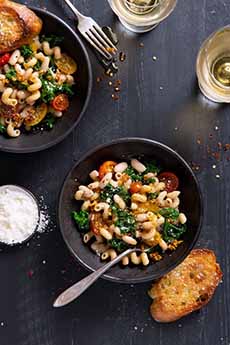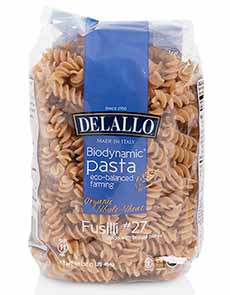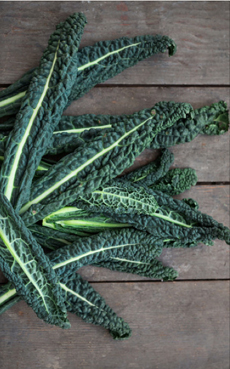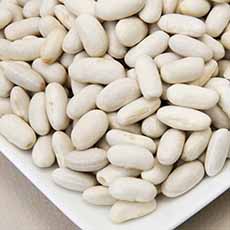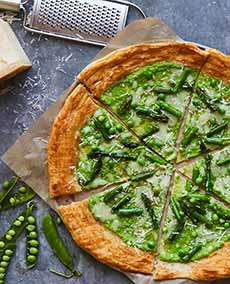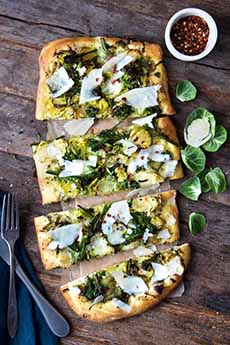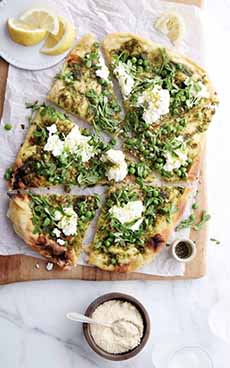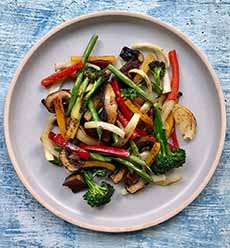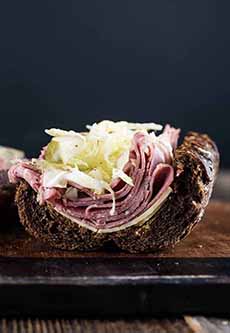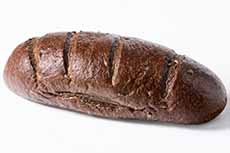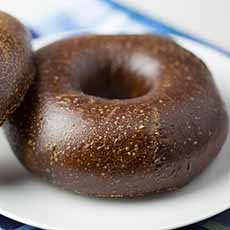|

[1] Cream cheese pound cake. The recipe is below (photo and recipe © The Baker Chick).

[2] Maple pound cake. Here’s the recipe (photo © King Arthur Flour).
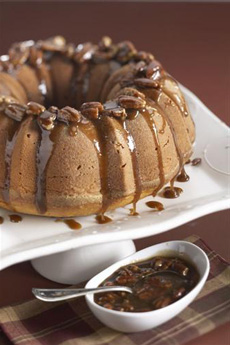
[3] Pumpkin Spice Pound Cake. Here’s the recipe from Spice Islands (photo © Spice Islands).

[4] Pound cake with berries and whipped cream (photo © Knudsen Dairy).
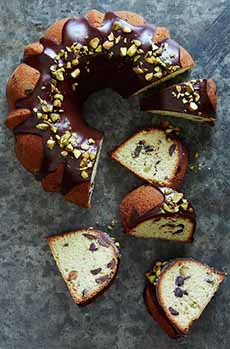
[5] Pistachio Chocolate Chip Pound Cake. Here’s the recipe from King Arthur Flour (photo © King Arthur Flour).

[6] Turn a pound cake into a layer cake with a berry-whipped cream filling. Here’s the recipe from The Baker Chick (photo © The Baker Chick).
|
|
March 4th celebrates one of our favorite holidays: National Pound Cake Day.
We admit to fighting the trend, and would much rather have a dense slice of pound cake than an airy cupcake.
Pound cake is a loaf cake, although some people make them in Bundt pans.
The original pound cake, buttery and moist, recipe was made with one pound each of butter, flour, sugar and eggs (that’s about eight eggs)—hence the name.
Vanilla or lemon are the classic flavors added to pound cake flavors, but quite a few variations have evolved through the years. See the history of pound cake, below.
This recipe from The Baker Chick adds a later addition, cream cheese, which first appeared in the 1880s (the history of cream cheese).
There’s a vanilla bean glaze, but the gustatory experience is just as wonderful without it.
Thanks to The Baker Chick for the recipe. Sign up for her emails and get a steady stream of irresistible sweet and savory recipes.
RECIPE: CREAM CHEESE POUND CAKE
Ingredients
1½ cups butter (3 sticks), softened
1 (8 ounce) package cream cheese- softened
2½ cups white sugar
1 tablespoon vanilla extract
1 teaspoon lemon or almond extract -or- 1 tablespoon lemon or orange zest
6 eggs- room temperature
3 cups cake flour*, sifted
For The Glaze
1 vanilla bean, split open
3 tablespoons of whole milk†
1- 2 cups powdered sugar
Preparation
1. PREHEAT the oven to 325°F. Spray well or grease a 10-inch bundt cake pan.
2. CREAM together the butter, cream cheese and sugar for about 5 minutes or until very light and fluffy. Stir in the extracts.
3. ADD the eggs, one at a time, scraping down the bowl as needed.
4. TURN the mixer to low speed and add the flour slowly and gradually. Do not over-mix (it toughens the crumb‡).
5. POUR the batter into the prepared pan. Bake at 325°F for 65-75 minutes or until a toothpick inserted in the center comes out clean.
6. MAKE the glaze: Pour the milk into a glass measuring cup and scrape in the vanilla bean. Let the bean steep for an hour to give the milk mixture a strong vanilla flavor. (If you start the glaze it when the cake goes into the oven, it will be ready as the cake is cooling.)
7. ADD the powdered sugar and whisk with a fork until the glaze is thick and the right consistency for drizzling. Drizzle over the cooled cake.
Baking Notes
* Use cake flour for the perfect velvety texture. If you don’t have it, you can use all-purpose and subtract 3 tablespoons of flour. Substitute 3 tablespoons of cornstarch and gently whisk together before using.
† You can substitute a mixture of lowfat milk and heavy cream for whole milk.
‡ The crumb is the professional term for the inside of a bread or cake. Depending on the recipe, the crumb can be soft or firm, dense or full of holes.
MORE POUND CAKE RECIPES
Grilled Pound Cake
Marble Pound Cake
Meyer Lemon & Ginger Pound Cake
Peanut Butter Pound Cake
Pineapple Pound Cake
Pumpkin Spice Pound Cake Bundt
POUND CAKE HISTORY
The original recipe, developed in England in the 1700s, made a very large and dense cake, like fruit cake. By the mid-1800s, the ingredient proportions had been adjusted to make the smaller, relatively lighter cake we know and love today.
The original pound cake, buttery and moist, recipe was made with one pound each of butter, flour, sugar and eggs (that’s about eight eggs), plus flavoring—hence the name.
In fact, the British pound cake is actually a fruit cake, containing currants, raisins, sultanas (golden raisins) and glacé cherries. Pound cakes were the traditional wedding cakes.
Since the ingredients are so simple, it’s hard to make a bad pound cake—just use the freshest eggs and butter you can find, real vanilla extract, and don’t over-bake.
Today’s pound cake is a loaf cake, although some people make them in Bundt pans.
Vanilla or lemon are the classic pound cake flavors, but quite a few variations have evolved through the years, adding:
Buttermilk, cream cheese or sour cream to the batter.
Every flavoring under the sun: amaretto, Black Forest, blood orange, cappuccino, caramel turtle, chocolate/white chocolate, chocolate chip, coconut-macadamia, Grand Marnier, Key lime, peanut butter, pecan, and so on).
Fruit or a fruit swirl.
While a plain piece of pound cake is a joy, you can make the dessert fancier with:
A scoop of ice cream, with or without caramel or fudge sauce.
Whipped cream and berries.
Fruit purée/sauce.
No matter how you slice it, we’ll take a piece…or two.
|
